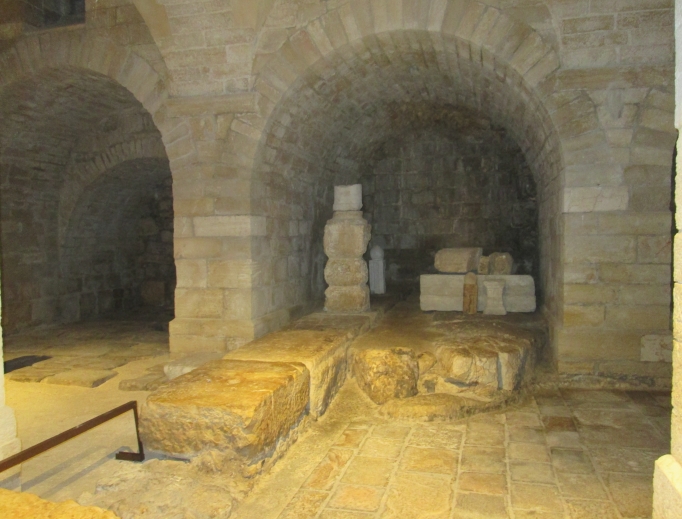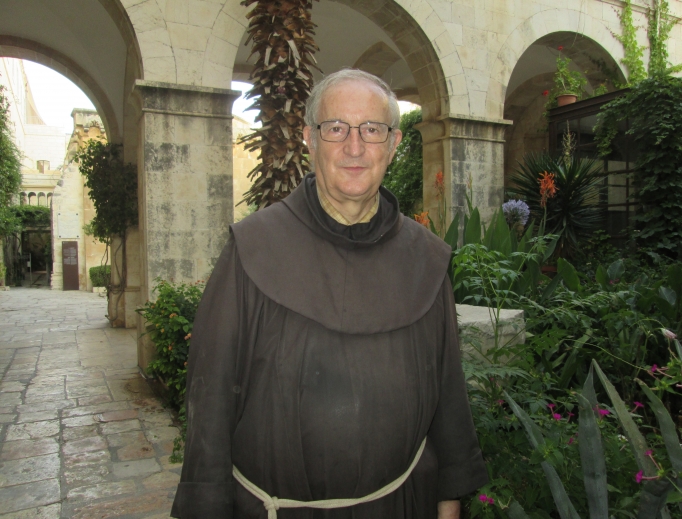Jerusalem’s Terra Sancta Museum Unearths Christian History
Visitors walk through time via an engaging exhibit overseen by the Custody of the Holy Land.

JERUSALEM — Tucked away behind a high stone wall in the Old City of Jerusalem lies a serene garden, two chapels and a Christian history museum few people know about.
Hailed as the world’s first museum to focus on the roots of Christianity and the preservation of Christian heritage and holy places here, the Terra Sancta Museum is located on the Via Dolorosa — the route that follows the sites of Jesus’ passion.
The museum is housed in the Monastery of the Flagellation, the second of the 14 Stations of the Cross. It stands beside the site of the ancient Antonia Tower built by King Herod the Great to honor Marc Antony, and destroyed by the Roman General Titus in the year 70, along with the nearby Jewish Temple.
It was here, according to tradition, where Jesus was flogged by Roman soldiers under the direction of Pontius Pilate and began his journey to Calvary bearing the cross.
The museum was founded by the Custody of the Holy Land, the Franciscan authority that safeguards the Catholic Church’s Holy Land properties and institutions. The Studium Biblicum Franciscanum, the faculty of Biblical Science and Archaeology of the Pontificia Universitas Antonianum in Rome, is responsible for the museum’s collections and exhibitions.
The museum is actually an expanded, modernized version of an archaeological exhibition housed at the complex since 1902. Opened in March 2016, it is the first of three permanent museum exhibitions planned by the custody in the Old City. The second, which is dedicated to the archeology of the Holy Land, is scheduled to open at the end of 2017. The third, whose opening date has not be announced, will be housed at St. Saviour’s Monastery near the Christian’s Quarter’s New Gate.
The Custody of the Holy Land decided to create the museum to emphasize that Christians have a long and rich history in Jerusalem “that needs to be exposed and better known,” said Father Pierbattista Pizzaballa, custos emeritus of the Holy Land.
Christians, although a tiny minority in the Middle East, “have always been and still are today a living, rich cultural presence that has made an enormous contribution to building relationships, not only with the local population, but also with so many societies around the world,” Father Pizzaballa said.
Visiting the museum is a unique experience. Visitors enter a large, cool cave-like room where ancient artifacts, many from structures that existed at the time of Jesus, are so well preserved it’s difficult to imagine them being 2,000 years old. Adding to the excitement is the knowledge that they were unearthed from this very site, where Jesus walked, or within a very small radius of his steps.

The lights dim, and a multimedia presentation starts with the words “I am Jerusalem.” The narrator relates the city’s history as a spotlight shines first on the remains of a Roman pavement and the Latin inscription of the Roman Emperor Hadrian (128-129) and then on the fragments of vaulted ceilings, doorframes and the upper part of a column that graced either the ancient Jewish Temple or the Antonia Tower dating back 2,000 or so years.
In the excellent interactive video, the narrator moves through history, from the rule of King Herod, the Jewish revolt against the Romans to Titus’ destruction of the Second Jewish Temple and the Antonia Tower.
In 313, Roman Emperor Constantine decriminalized Christianity, allowing the religion to flourish. In 637, Caliph Omar conquered the city “and established mosques built on the [Jewish] Temples’ ruins” atop the Temple Mount.
Asserting that the Al Aqsa Mosque is built where the Jewish Temples (Jesus visited the Second Temple) once stood is a controversial statement in this part of the world, where many Muslims insist that the temples never existed and that Jews and Christians have no religious or historical claim to Jerusalem.
The museum’s video clip also says that, in 1099, when Christian rulers joined the First Crusade “to make pilgrimages possible again, they entered Jerusalem with considerable bloodshed” — a statement that acknowledges the suffering of other Holy Land populations.
After providing a tour of the museum, Franciscan Father Eugenio Alliata, director of the Archaeological Museum-Stadium Biblicum Franciscanum, said opening an exhibition in Jerusalem requires a great deal of sensitivity.

“We have Muslim visitors and Jewish visitors. We understand there are people other than Christians coming to the museum. We want to be open to dialogue,” Father Alliata said.
Situated on the Via Dolorosa, the museum is in a unique position to describe Jesus’ journey in a way other facilities cannot.
From its opening in March 2016 till March 2017, the museum received 18,000 visitors. Father Alliata hopes that number will double in the next year.
Sara Cibin, the museum’s project manager, said roughly 2,500 visitors — from Christian pilgrims to local Christian and Muslim school groups — come every month.
“They come mostly in small groups, and we are encouraging travel agencies and tour guides to include us in their itineraries, but it’s difficult to change long-standing habits. But every month new people are coming on board.”
Cibin called the museum experience “unique.”
“As of right now, it is the only experience the Christian community in the Old City is offering to visitors, but especially Christian pilgrims. No one else is providing an in-depth history lesson about the history of the Via Dolorosa.”
Cibin said, “Once they come to the museum, they will have a better sense of what they are doing when they retrace the footsteps of Jesus.”
Michele Chabin is the Register’s Middle East correspondent. She writes from Jerusalem.
- Keywords:
- christian history
- custody of the holy land
- holy land
- jerusalem
- michel chabin
- terra sancta museum

















